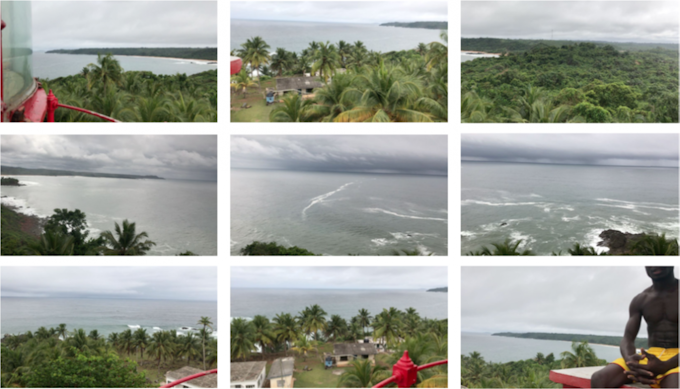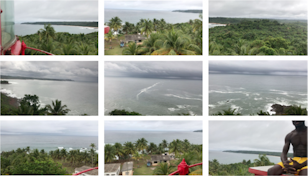
‘The tendency of disciplinary conventions (eg. cartography) to stand as statements of fact cannot survive an ongoing confrontation with their own virtuality – that part of their diagrammatic function which stands as a structure of possibility, in plural, not universal. While any diagram propagates through actual power, its virtuality simultaneously reveals the limits of that power. Ironically a diagram’s power is bounded (limited) by its inherent unboundedness. Which is to say, a diagram is always only an option.
Nolan Oswald Dennis 01‘As much as the map re-presents a geographical territory, landscape, or space, it is infused with time and temporality, usually at the intersection of the distance between two points on it. The map is also infused with several intersecting and conflicting temporal domains. There are the past(s) – of the mapmaker, of the mapped territory that lies inert on the map – the present(s) – of the map user, of the mapped terrain’s changes in reality – and the future(s) of all of those events. These interactive temporal domains fuse together as a 3-D invisible hologram layered over the body of the map.’
Rasheedah Phillips 02
Starting from near nowhere
I found my way to the land closest to nowhere after Google Maps said there was no road to follow. My eyes told me different and I kept going. To get there that first night, especially alone after dark, I was far more reliant on strangers’ knowledges of well travelled roads than any formal map or its timings. Nowhere is an invention. Real or not, it enables navigation, not on land but at sea:
Latitude 0°
Longitude 0°
Altitude 0°
Nowhere is the centre of the surface of the world. It is on the longitude line that links Britain and Ghana. Nowhere sets its clocks to Greenwich Mean Time. This nowhere is the nowhere because the British were best at sea. The land closest to nowhere is a cape jutting out into the Atlantic, not to one point, but three: nowhere is never somewhere you get to one way.
From near nowhere I found my way to, and now attempt to map, Princes Town, Akwidaa, Dixcove and Butre. Tracing the routes to, from, between and within Fort Fredericksburg, Fort Dorothea, Fort Metal Cross and Fort Batenstein. From the land closest to nowhere my work is to know where Brandenburg territory became Dutch or British, and when, and what that meant. The work is also to listen for why what had long been Pokesu became Princes Town, and who decided the land of Chief Dekyi should be known as Dixcove.
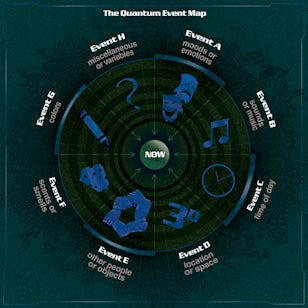
When people of the African Diaspora come to Ghana searching, relatively few end up this far west. At least not specifically for the forts – the beaches are a bigger draw and there are more significant forts elsewhere. More often Cape Coast and Elmina are both the primary destinations and point of departure. From there, routes are followed inland, towards particular markets or water bodies, or out to the sea from Cape Coast and Elmina castles. It’s far less common for forts to initiate the type of journey I’m on, border to border along the Trans-West African Coastal Highway, searching. And why would they?
These sites were never for Africans on the continent. Black people of the New World have different routes. Europeans seldom come looking.
Of intervals to be traversed03
Three years ago in Afterall Ntone Edjabe of Chimurenga asked:
What if maps were made by Africans for their own use, to understand and make visible their own realities and imaginaries? How do we, on the continent, create a cartography that is so exactingly representative of our fluidities, complexities and material realities? 04
Before that nowhere was understood as such and a near nowhere could be positioned relative to it, there were long histories here. Nowheres’ legibility was ordered by the destructions, displacements, disappearances and desecrations of these histories. Yet, life never stopped. Not enough would be made visible without attending to these histories. Before, during and after this nowhere made its mind up about itself, there were innumerable lives taken, as in ended and transported. Those lives kept much from here and made much elsewhere. Not enough would be made visible without attending to these.
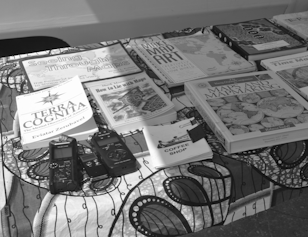
What would it take to map these sites? Really map for time and movement? Map for relationships? Map for hopes, dreams, and possibility? Map for different registers of knowledge and modes of knowing? Map for the things that live under the ground we walk on? Ntone ended his call for an Africa-centred cartography thus:
The task is to develop maps that are based on a multiplicity of scales and projections, and a multiplicity of symbolisation – a river can be a body of water and can be a sacred being. Scales, set squares and compasses alone will not work; we also require hands, feet and hearts. And memory
In addressing these questions and needs, allow me to attend to a constellation of moments, thinking and a set of practices that might support one in adequately orienting themselves in a cartographic endeavour of this sort.
A brief consideration of the Black (un)geographic
Black geographies, and the Black ungeographic 05, are action, not discipline. Instead they are the work of un-disciplining, bringing disparate worlds into correspondence, negating dominant protocols, casting placemaking as a set of ideas and not strictly a knowable geography. 06 They do not fix knowledge or affirm knowability. They are open, infinite possibility. They are not, and should not only be, the rejection of cartography as a colonial tool, a rejection of the abuses of power, and a move towards the possibility of claims of ownership. Black geographies help us question the desire to own. They enable us to perhaps approach the coast of Western Africa as part of the shoals07 of normative theorizing of the spatio-temporalities of New World conquest, constituting moments ‘of convergence, gathering, reassembling, and coming together (or apart).’08
I begin a consideration of African cartography with an insistence, also, on Black geographies because the project that is being embarked on is not only in knowing our land, and ourselves, in relation to the erasures of the colonial project, and abuses that followed it here on the continent, but in relay with, and relation to, ourselves as Black people, anywhere. Black geographies ensure we can stand at numerous doors of no return and allow them to be animated both by those who went through and those who didn’t. 09 They account for befores, durings and afters, asking:
What else happened? 10
What is happening?
What could happen?
What should happen?
What are the relationships between these what’s? In the questioning too is a drawing forth.
‘I want to find a way to draw a map home when I am already at home’ 11
I am interested in Nolan Oswald Dennis’ and Black Quantum Futurisms’ (BQF) cartographic practices and the guidance and strategies they provide. From Johannesburg-based Dennis is a systems- rather than site-specific approach towards topology and a diagrammatics of Black spatial consciousness. In his practice, various differences are made concurrently traversable as multiple social fictions are stitched together. From Philadelphia-based BQF, initiated by Rasheedah Phillips and Camae Ayewa (stage name Moor Mother), is a community embedded spatio-temporal practice: ranging from housing journey maps, sonic mappings, communal memory mapping and a digital temporal portal. In each of these cartographies is the offering of a strategy for being (in)/(with) time otherwise than with Western space-time constructions. Both practices grapple with the ontological and existential impacts of colonialism, a project that Phillips acknowledges did ‘different versions of the same thing to all Black people everywhere’. 12
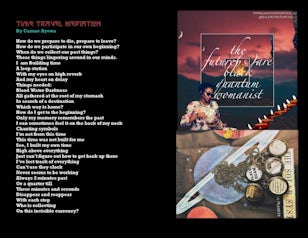
By attuning their assumptions about reality to the laws of quantum physics, BQF open up not only simultaneous elsewheres, but also elsewhens. Their alignment with a scientific episteme, so valued by the Western imagination, confirms at the quantum scale realities as Africans have always understood them, opening up possibilities for imagination and relation. In this gesture, BQF establish a particular deconstructive relationship with the Western project. Considering their work with the masters’ clock and map 13, the metaphysical assumptions of their practice are an extension of concerns with what might constitute, and how one may use, a tool: decisions are tools too. Additionally, Phillips’ work as a housing lawyer extends the possibilities offered by tools, and systems, not calibrated towards the dignity of Black life. As she explains: ‘when I approach my work as a community lawyer I also become a specific kind of instrument or tool.14 This tool has to work with facticity in different ways to my artistic practice but there are ways it can allow people to access spaces that are privileged’. 15
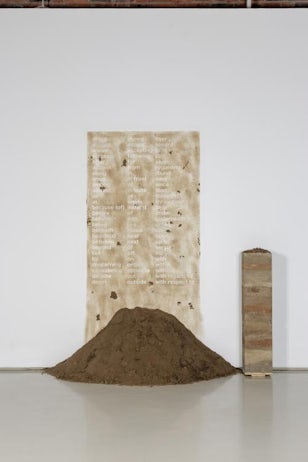
Dennis also considers this terrain, asking when certain tools stops being a master’s and can become yours: ‘What do I need to do for it to do something else?’. 16 Arriving at the import of using ‘small gestures for holding secrets: marks, notations, clues’. 17 Whether in cartography itself, writing, or drawing, ‘the task is not to be so familiar with something that I now know its inner secrets and can perform some kind of transmutation… the task is to be with the tool in ways that can be delinked from the antagonistic or general project’. 18
In Dennis’ being with differently, is a drawing forth. Particularly through his relationship with drawing, his draughtsmanship developed through an architectural training that makes assumptions about space at odds with Black spatial consciousness. His is a being with a technology of spatial representation in ways that recognise that, ‘African people have learnt how to move through this world while knowing that this world is not real’. 19 They are not drawings of, but drawings as, space. They get at the things underneath: the blood vessels, the guts, the underground tunnels. Their systems approach allows one to meet as many of the interactions that make space possible as possible. They are projections in systems in need of projections. In this practice of being, and drawing forth, with graphite and paper, to draw is also ‘simply, to equalise. As in 1-1, a draw. To draw is to equivocate, in the abstract, such that what is drawn can stand for what is not’. 20
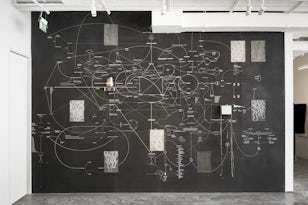
‘Merekɔ Oguaa aba’
I’d wake up with the fishermen’s songs and go watch the sunrise on those rocks behind the fort. From that spot, if the sky was clear enough, when the rising sun reflected on the surface of the sea, it looked as though the heavens were opening up. I’d sit and think, and sometimes the fishermen would end up on the rocks too. Pulling their rope, singing their songs. Balanced far too close to the edge.
I was always trying to find a good time to go into the fort. I’d been before. Twice. And I’d done the tour. Twice. But it felt like too much now. So I’d sit at that spot where heaven opened up, avoiding history. It would be Ekow and I every morning. On the first morning I met him there, a man walked past and asked me to talk to him. I seemed decent and maybe I’d have some sense for the boy. I asked why he wasn’t going to school and he said his mother couldn’t pay. So I asked if he’d go if I paid, and he said no. I didn’t push.

We’d just talk about the odd jobs he was picking up in town. He is the one that told me about the part of the beach, just left of the fort, that was still known as the white men’s beach because that’s where the ships would drop their anchors. One morning we got stuck, and I couldn’t find a word, and he couldn’t meet me halfway. I asked him if he liked talking to me, and he said yes. And I told him, we wouldn’t ever need to get stuck like this if he went to school. And he told me, it wasn’t his problem if I didn’t speak my own language well enough. That he spoke as much English as he needed to, and Fante was good enough for him.
In the evenings, I would sit with Ras Kwame and his friend Poppee. Poppee would talk about George Best, the Premier League, and those boys he would avoid at the betting shop if he had DStv at home. We’d talk about land too:
You know, this place was important before. Cape Coast isn’t a Fante name. This is Oguaa (‘Cape Coast’). You still hear people say, Merekɔ Oguaa aba. It was important long before that castle that has never had any king living there. There are 77 deities here. One of their shrines is next to the room you sleep in. Don’t you see people pour libations in the water sometimes? You know, in our language the real word for the sea means, ‘the spirit that returns’. 21 We believe whatever you give it comes back to you. Sometimes it’s the pure water sachets and plastic bottles that washed out to sea from the gutters when it rained. Sometimes it’s bits of bodies. On good days it’s people from Kingston Town and New York City, searching.
Key to the Map
Camae Ayewa, ‘Sights and Sounds of the Passage’, in Rasheedah Phillips and Dominique Matti (ed.), Black Quantum Futurism – Space-time Collapse I: From the Congo to the Carolinas, Philadelphia, PA: AfroFuturist Affair, 2016, pp. 9–13.
Black Quantum Futurism, blackwomxntemporal, [website] available at: https://www.blackwomxntemporal.net, (last accessed on 14 May 2020].
Dionne Brand, A Map to the Door of No Return: Notes to Belonging, Toronto: Doubleday Canada, 2003.
Nolan Oswald Dennis,’Options’, Goodman Gallery, Cape Town, 24 January–9 March 2019.
Nolan Oswald Dennis, A fragment on diagrams and dreams. [online] available at: https://www.nolanoswalddennis.com/studio_theory/a%20fragment%20on%20diagrams%20and%20dreams%20.pdf, (last accessed on 20 July 2020).
Nolan Oswald Dennis, drawn out: notes for a (k)new world [online] available at: https://www.nolanoswalddennis.com/studio_theory/drawn%20out-notes%20for%20a%20(k)new%20world.pdf, (last accessed on 20 July 2020).
Ntone Edjabe, ‘How to Eat a Forest’, Afterall: A Journal of Art, Context and Enquiry, No. 43, Spring/Summer 2017, pp.70–73.
Rubén Gaztambide-Fernández. ‘Decolonial options and artistic/aestheSic entanglements: An interview with Walter Mignolo’, Decolonization: Indigeneity, Education & Society, Vol. 3, No. 1, 2014, pp 196–212.
Tiffany Lethabo King, The Black Shoals: Offshore Formations of Black and Native Studies, Durham, NC: Duke University Press, 2019.
Katherine McKittrick, Demonic Grounds: Black Women and the Cartographies of Struggle,Minneapolis: University of Minnesota Press, 2006.
Katherine McKittrick, ‘Mathematics Black Life’, The Black Scholar, Vol. 44, Issue 2, 2014 pp.16–28.
Katherine McKittrick (@demonicground), ‘this puts the black “ungeographic” (and a black sense of place) to work in productive ways because it casts place-making as a set of ideas and rebellions rather than a knowable geography. to be ungeographic is heretical’, [Twitter], 5 August 2019, 4.49 pm, available at https://twitter.com/demonicground/status/1158404706135433216.
Nkgopoleng Moloi, ‘Nolan Oswald Dennis embraces misreading and misinterpretation, Artskop [online], 15 March 2019, available at: https://www.artskop.com/artmedia/en/nolan-oswald-dennis-embraces-misreading-and-misinterpretation (last accessed on 4 May 2020].
Fred Moten, ‘Blackness and Nothingness (Mysticism in the Flesh)’, South Atlantic Quarterly, vol. 11, issue 4, 2013, pp.737–780.
Rasheedah Phillips, ‘Placing Time, Timing Space: Dismantling The Master’s Map And Clock’, The Funambulist Magazine [online], 2018 available at: https://thefunambulist.net/articles/placing-time-timing-space-dismantling-masters-map-clock-rasheedah-phillips, (last accessed on 9 May 2020).
Koen Vermeir and Jonathan Regier, Boundaries, Extents and Circulations: Space and Spatiality in Early Modern Natural Philosophy, New York: Springer, 2016.
Footnotes
-
Dennis, 2020, p.1. For more information on Dennis’ articulation of the ‘option’ please see Gaztambide-Fernández, 2014.
-
Phillips, 2018, p. 44.
-
‘In early Western maps, gaps and the spaces between locations pointed to the fact of intervals to be traversed. A reflection of the itinerary, or intention, of traveller.’ Regier and Vermeir, 2061, p. 2.
-
Edjabe, 2017.
-
I draw here particularly on Katherine McKittrick’s analysis of black women’s geographies in the black diaspora and her engagement with the possibilities that arise at the encounter between black studies and human geography: ‘The relationship between black populations and geography – and here I am referring to geography as space, place, and location in their physical materiality and imaginative configurations – allows us to engage with a narrative that locates and draws on black histories and black subjects in order to make visible social lives which are often displaced, rendered ungeographic’. McKittrick, 2006, p. x. To be rendered ungeographic is to be denied the capacity to produce space: ‘the ungeographic is a colonial fiction, sometimes cast in real life, thus functioning to determine how we only seem to see black geographies in hierarchical, stereotypical, human/inhuman terms, and therefore as ostensible impossibilities’. Ibid, p. 5.
-
McKittrick, 2019.
-
Shoal, n. and adj. n. A place where the water is of little depth; a shallow, a sand-bank or bar. adj. of water, etc.: not deep; shallow. ‘Because the shoal’s shape, expanse, and density change over time, the shoal is as much a dynamic and moving set of processes and ecological relations as it is a longitudinal and latitudinal coordinate that cartographers attempt to fix in time and space. It is a mobile, always changing and shifting state of flux. As an ecological space, it represents an errant and ecotonal location made of both water and not water. Ecotones are classified within environmental science as a combination or meeting of at least two distinct ecological zone. The shoal is liminal, indeterminate, and hard to map.’ King, 2019, p. 3
-
Ibid, p. 4.
-
See Brand, 2001, p. 49, for figuring of the Door of No Return: ‘to live at the Door of No Return is to live self-consciously. To be always aware of your presence as a presence outside yourself’.
-
This orientation towards ‘what else happened’ refers to strategies for reading the archive that rest on ‘encountering, thinking about and articulating black absented presences: the unspeakable, the unwritten, the unbearable and unutterable, the unseeable and invisible, the uncountable and unindexed, outside the scourge, that which cannot be seen or heard or read but is always there’. McKittrick, 2014, p. 22
-
Dennis, interview with the artist, July 2020.
-
Dennis, interview with the artist, July 2020.
-
Phillips, 2018.
-
Phillips, interview with the artist, July 2020.
-
Phillips, interview with the artist, July 2020.
-
Moloi, 2019.
-
Ibid.
-
Dennis, interview with the artist, July 2020.
-
Ibid.
-
Dennis elaborates this point, ‘The drawing body is an extension of the human body under these inertial conditions. More precisely, it is a prosthetic transformation of that body in conditions where acting becomes a type of inaction: a game played against time, or put simply: planning. The drawing body is called into being wherever an apparatus is put to work to draw out, as a matter of practice, a (k)new body in violation of colonial assumptions of linear time and normative value. Some kind of mark-making instrument that shivers and trembles, and moves forward only in indeterminate scribbles. This drawing body is the inverted agency of a planning exercise performed in a situation where consequences must precede their causes’. Dennis, drawn out: notes for a (k)new world), 2020.
-
To enliven this conversation, please consider the thinking on seaborne sociality in North American scholarship, of which Fred Moten wrote, it is ‘terrible to have come from nothing but the sea, which is nowhere, navigable only in its constant auto dislocation. The absence of solidity seems to demand some other ceremony of hailing that will have been carried out of some more exalted frequency’. Moten, 2013, p. 744. This articulation of nothing, and nowhere, draws on an ‘affirmative negation’, particularly the Afro Pessimist thought of Jared Sexton and Frank B Wilderson, wherein: ‘We study our seaborne variance, sent by its prehistory into arrivance without arrival, as a poetics of lore, of abnormal articulation…Having defied degradation , the moment becomes a theory of a moment, of the feeling of a presence that is ungraspable in the way that it touches’. Ibid., pp. 743–744.
